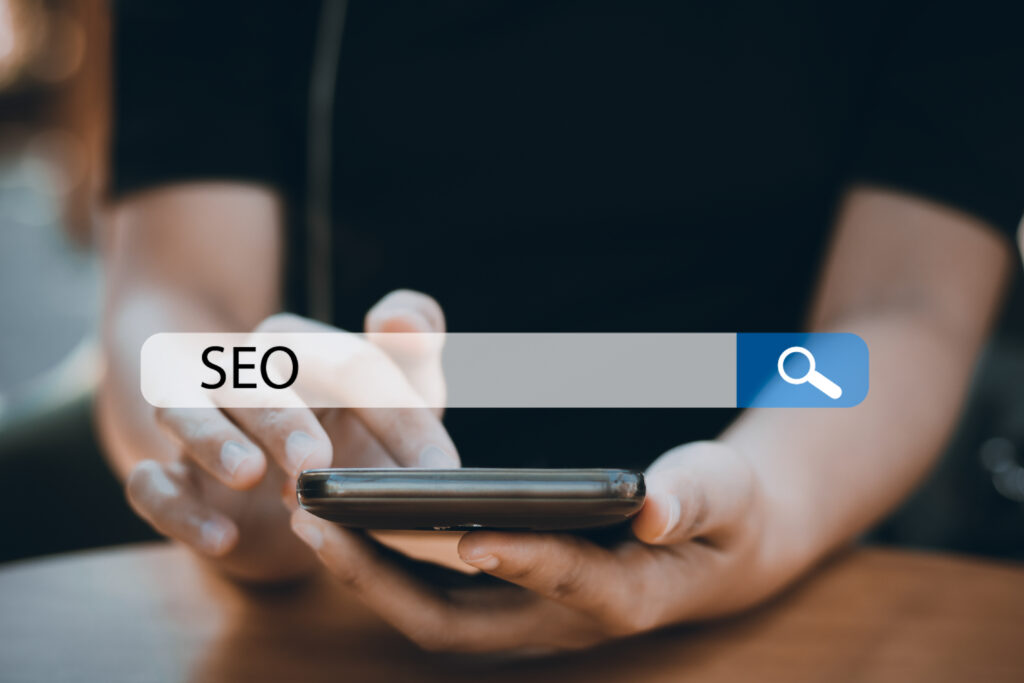It’s one thing to get your Google Ads set up, it’s another to know how to run them efficiently!
This blog will help you understand the data associated with Google Ads, what to look for, and how to problem-solve along the way.
Let’s get started with the basics.
Understanding Data
This is an example of some data I’ve pulled from one of our wedding venue accounts. Each column represents an important metric related to your Google Ads campaigns. In this example, we have one local campaign, and one national campaign. Let’s break down each column:
Clicks:
This is the most straightforward. Clicks are how many people have interacted with your advertisement or any of the extensions linked to the advertisement. The more clicks you get, the more chances you have to land a conversion. Be careful – those clicks can add up in cost!
Impressions:
Impressions refer to the frequency of your advertisements actually being shown on the search results page. In the local campaign above, we see these ads have been shown on a total of 3,879 search results pages.
Even if your ad is not clicked, it was still displayed and therefore still counts toward your total number of impressions. There is usually a directly proportional relationship between impressions, clicks, and conversions. The more the better (usually).
Click Through Rate (CTR)
CTR refers to the ratio of clicks to impressions. In the local campaign, we see 261 clicks, and 3,879 impressions. (261/3879) = 0.0673 (6.73%)
Simply put, this advertisement has interacted with roughly 7% of the time it has been shown on the Google search results page. We want to aim for the standard CTR of 5%, but the higher the better!
Average Cost Per Click (Avg. CPC)
Ok, this one is pretty self-explanatory, however, this metric is particularly important for maintaining an optimized Google Ads account. The lower your Avg. CPC, the more clicks you get – thus the more bites at the apple! Ideally, the more people hitting your landing pages, the more chances you have for a conversion.
If you have a budget of $20/day ($600/month) – and you had identical values for Avg. CPC – you’d get roughly 10-20 clicks per day.
Now if that value were to increase to $7 per click, you’d get 3 clicks at MOST. Keeping track of how much you’re bidding on each keyword is crucial. Steer clear of “Maximize conversions” bidding strategies, and stick to “Manual CPC” or “Maximize clicks” where you can designate a “Max Cost Per Click” value. I personally never spend more than $5 on a click.
Cost
Easy. This is just how much you have spent in total. This value factors into the most important metrics below.
Conversions
Total number of goal completions, recording and imported via Google Analytics. Basically, your total leads in a given time range.
Cost Per Conversion (Cost/conv.)
We have cost listed in this data sheet so that we can understand Cost/conv. This value essentially tells you how much it is costing you to get a new lead. Depending on the industry the target Cost/conv can change.
This wedding venue is getting a new local lead for $23 and a national lead for $19. This is just another simple ratio in action. How much are your clicks costing you, and how many leads are you getting in total? $456/20 = ~$23/conversion
The lower you can get this number, the better your ROI. Ideally, you’d be getting conversions for as low cost as possible, however, some fluctuation always happens. If you’re finding your cost/conversion is listed at $300/conversion, that might not be the best for your bottom line.
Conversion Rate:
Lastly, this metric measures the frequency of a conversion when someone clicks on the advertisement. On average, healthy conversion rates are about 5%. The higher you can get this value, the more leads you’ll get.
For the local campaign above, the conversion rate is 7.66% – meaning roughly 8/100 people successfully completed the CTA on this landing page for this advertisement.
Conversion rates help us understand the relationship between the landing page and the search keyword. Higher conversion rates mean the landing page is excellent and performing how it’s been designed. Lower conversion rates could be due to issues in the search terms, or the landing page design.
I’ve included the standard Johnson Jones Group aims for with our active clients:
Find Out How We Can Help Grow Your Business
Let’s discuss your marketing needs, and we’ll help you put together a digital marketing strategy that will generate more leads and save you time.
Standard Benchmarks for Reference
| CTR | Avg. CPC | Cost/conv. | Conv. Rate |
| 5% | <$5.00 | <$60.00 | 4% – 6% |
Optimizing CTR
Now that we understand the data a little better, let’s dive into applying that information to your actual ads!
A/B Testing
As you know from setting up your Google Ads account, A/B testing is an extremely valuable tool when measuring the success of your advertising headlines. A is listed atop, B below:
Here we see the two ads that have been designed for the A/B test. Even though they look very similar, both of these ads have performed dramatically differently.
Let’s first take a look at clicks.
Obviously, A has performed better than B in clicks and CTR. We can trust this data since they both have roughly the same amount of impressions. If A had 500 impressions and B had 50, the number of clicks would not be as informative on the effectiveness of this ad.
Since we have even impressions, we can see A has performed better with a higher CTR. It got nearly double the clicks!
Now about costs, we can see the Avg. CPC is lower on A than B, and it has a much better conversion rate as well. We can see we’ve spent more on A since it had more clicks. Finally, we can go over conversions:
It’s clear that A is beating B in almost every category. Higher CTR, lower cost per click, and more conversions! We got 2 conversions from this ad alone, where B got none.
From this, we can understand that “Hacienda Style Desert Venue” performs far better than “Historic Desert Wedding Venue.”
From here, I will keep A the same and change B to another headline to rerun the A/B test. From there we keep optimizing our ads until they are performing the best we can get them to be!
Optimizing Conversion Rates
While an A/B test is helpful to adjust CTR, sometimes you’ll have a great CTR (>5%), but zero conversions – meaning your advertisements are generating a lot of interest, but the landing pages are not providing the information people are looking for.
There could be a few reasons why this is happening:
Landing Pages
There’s a chance something is wrong on your landing page. I’d recommend testing the conversion action – is it fully functional? Are people getting what was promised? Is anything broken?
If it’s not a technical issue, there’s a good chance the info on your landing page is not what this person is looking for. Either they came in looking for a different service – or something just wasn’t compelling enough. This part is a little tricky as you need to try to put yourself in the shoes of someone visiting your landing page.
We use Smartlook – a tool that helps us see the journey of someone on our landing pages – there we can check for technical issues and determine where we lost the engagement of the session.
Search Terms
Maybe your landing page is perfect, and the problem is you’ve brought the wrong person to your site! Perhaps you’ve mistakenly brought someone onto your landing page who was looking for a different service. We can tell what people have been searching under the Search Terms tab.
You can see most of these search terms are related to the new mexico & desert wedding venue keywords we were aiming for. However, one keyword I noticed was “budget.” Since this is a luxury and slightly more expensive space to reserve, I want to make sure I’m bringing in people looking to pay that much.
The keywords “affordable” “cheap” “budget” “free” or any other discount qualifiers tend to lead to wasteful spending. These kinds of search terms do not usually lead to conversions. To avoid your ads being shown to these searches, you’ll need to revisit negative keywords.
Negative Keywords
We went over this in the set up module, but you should be revisiting negative keywords on a weekly basis. After analyzing your search terms, it’s important to add the keywords you want to avoid into the negative keywords tab. In this example I’ve added the keyword “budget” to the negative keyword list for this campaign.
Demographics
You might find better results by optimizing your demographics. You can optimize by age, gender, and household income bracket. First, select a campaign, then select Audience on the side tab.
This will provide you with a breakdown of who is clicking on your advertisements. From there you can choose to exclude certain age groups, genders, or household incomes.
Ads Schedule
The last optimization tip I have is based on a schedule. You might find that your budgets are getting spent before the day is up! Since the default ad schedule is 12:00 AM – 11:59 PM, we can switch this so the most optimal times are getting the most clicks!
Here I’ve optimized the ads to only be shown only during 8:00 AM – 11:00 PM – this tends to be when the most conversions happen. Avoiding wasteful clicks at 4:00 AM will ultimately help your overall conversion rate and your ROI.





